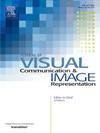Document forgery detection based on spatial-frequency and multi-scale feature network
IF 2.6
4区 计算机科学
Q2 COMPUTER SCIENCE, INFORMATION SYSTEMS
Journal of Visual Communication and Image Representation
Pub Date : 2025-01-31
DOI:10.1016/j.jvcir.2025.104393
引用次数: 0
Abstract
Passive image forgery detection is one of the main tasks for digital image forensics. Although it is easy to detect and localize forged regions with high accuracies from tampered images through utilizing the diversity and rich detail features of natural images, detecting tampered regions from a tampered textual document image (photographs) still presents many challenges. These challenges include poor detection results and difficulty of identifying the applied forgery type. In this paper, we propose a robust multi-category tampering detection algorithm based on spatial-frequency(SF) domain and multi-scale feature fusion network. First, we employ frequency domain transform and SF feature fusion strategy to strengthen the network’s ability to discriminate tampered document textures. Secondly, we combine HRNet, attention mechanism and a multi-supervision module to capture the features of the document images at different scales and improve forgery detection results. Furthermore, we design a multi-category detection head module to detect multiple types of forgeries that can improve the generalization ability of the proposed algorithm. Extensive experiments on a constructed dataset based on the public StaVer and SCUT-EnsExam datasets have been conducted. The experimental results show that the proposed algorithm improves F1 score of document images tampering detection by nearly 5.73%, and it’s not only able to localize the tampering location, but also accurately identify the applied tampering type.
基于空频多尺度特征网络的文件伪造检测
被动图像伪造检测是数字图像取证的主要任务之一。虽然利用自然图像的多样性和丰富的细节特征,可以很容易地从篡改图像中检测和定位精度较高的伪造区域,但从篡改的文本文档图像(照片)中检测篡改区域仍然存在许多挑战。这些挑战包括检测结果差和难以识别应用的伪造类型。本文提出了一种基于空频域和多尺度特征融合网络的鲁棒多类别篡改检测算法。首先,采用频域变换和SF特征融合策略增强网络识别篡改文档纹理的能力;其次,结合HRNet、注意机制和多监督模块,捕捉不同尺度文档图像的特征,提高伪造检测效果;此外,我们设计了一个多类别检测头模块来检测多种类型的伪造,从而提高了算法的泛化能力。在基于公共StaVer和SCUT-EnsExam数据集的构建数据集上进行了大量实验。实验结果表明,该算法将文档图像篡改检测的F1分数提高了近5.73%,不仅能够定位篡改位置,而且能够准确识别应用的篡改类型。
本文章由计算机程序翻译,如有差异,请以英文原文为准。
求助全文
约1分钟内获得全文
求助全文
来源期刊

Journal of Visual Communication and Image Representation
工程技术-计算机:软件工程
CiteScore
5.40
自引率
11.50%
发文量
188
审稿时长
9.9 months
期刊介绍:
The Journal of Visual Communication and Image Representation publishes papers on state-of-the-art visual communication and image representation, with emphasis on novel technologies and theoretical work in this multidisciplinary area of pure and applied research. The field of visual communication and image representation is considered in its broadest sense and covers both digital and analog aspects as well as processing and communication in biological visual systems.
 求助内容:
求助内容: 应助结果提醒方式:
应助结果提醒方式:


